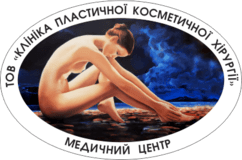Poltava, prospekt Vitaliia Hrytsaienka 9 Weekdays: 8:30-15:00, Weekend: weekend +38 (0532) 56-02-11+38 (095) 688 25 07
Rehabilitation after plastic surgery

A positive result of plastic surgery depend on many factors. The main factor is the experience of the surgeon that is performing the surgery. The second but not least factor is the recovery after surgery. Since the tissues are recovering individually for each patient, terms of releasing into normal social rhythm can vary dramatically. In addition, if rehabilitation periods are tightened - this creates considerable trouble for patients.
Rehabilitation is a normal process after each operation or any invasive procedure. Swelling, bleeding, pain and discomfort accompany the patient after any operation. These symptoms can be reduced and eliminated in an extremely short time.
Although the operation is important, it is only a first step on the way to the appearance correction; the next step is the rehabilitation, which often brings more discomfort for the patient than the surgery itself. After surgery, the desired complex of rehabilitation measures includes inspections of the surgeon, performing injections aimed at eliminating of the infiltrations, the physio-rehabilitation procedures aimed at lysing of the hematomas and bruising.
Methods of physio-rehabilitation influence:
UHF therapy is a method of physio- therapeutic influence, which is based on the exposure of the electromagnetic field with high frequency electromagnetic waves onto postoperative tissues. The body of the patient absorbs large amounts of energy during the interaction of the electromagnetic field. The absorbed energy is released as heat, which significantly increases metabolism of postoperative tissues, accelerating the elimination of edemas, infiltrations, seals and softening of calluses.
During the session of UHF therapy, the patient feels warmth in the treatment area, sometimes its intensity may vary (it is normal). Overheating of the tissues cannot be allowed, since operational areas are temporary denervated in the early postoperative period after the operation, and burns to the skin may simply not be felt. You also need to tell your doctor about the presence of metal crowns, if any, and the metal elements under the skin (prosthetic articulation, bone-bonding plate). Before the procedure, it is necessary to remove the earrings as all metal constructions of high density are heated much more intense and can cause a burn or melting of the metal. UHF therapy works best on dense tissues (bone and cartilage tissues). The denser the tissue is - the more intensive the exposure is.
UHF therapy is used as a rehabilitation course after rhinoplasty in the first place. Usually, the course includes 6-10 procedures. It is started one week after the operation (after removal of gypsum). The intensity of the load is selected individually. The time interval begins with 10 minutes and gradually increases up to 20 minutes. Number of visits depends on the dynamics of rehabilitation. For the first times the procedure is performed every other day, and in case of normal tolerance, it is administered every day.
Phonophoresis (ultrasound treatment) is a combined technique of physiotherapy influence that includes a combination of the ultrasound treatment and drug administration.
This is a common method of physical therapy and instrumental cosmetology that creates the mechanical vibrations of a frequency above 18 kHz in the tissues.
The penetration depth of the vibrations is up to 6 cm. The phonophoresis provides activation of cellular metabolism, lymph drainage and local circulation. Ultrasound accelerates regeneration, reduces edema, exerts an analgesic effect and increases the adsorption properties of tissues. When administering the drugs (therapeutic agents) during the phonophoresis, it affects the tissues much more intense, as their perceptive ability becomes higher and therapeutic agents act precisely at the desired depth.
Phonophoresis is prescribed as a course of rehabilitation procedures after blepharoplasty, circular or short cicatrical facelifting and Bichat cells removal. It is not appointed after operations that involve the installation of implants. In order to conduct ultrasound vibrations, the heparin ointment is applied to ultrasound nozzle.
A course of treatments depends on the dynamics of rehabilitation and includes from 5 to 15 procedures. The course starts in 5 days after the operation with low load conditions. During its conducting, the treated skin can redden and pinch (it is normal). At first, phonophoresis is appointed every other day. In case of normal tolerance, the procedure is performed every day. Administered substance (ointment based on heparin) stimulates resorption of blood clots, thereby causing even better stimulation of bruises absorption processes.
Microcurrent therapy is one of the physical therapy procedures carried out with the use of electric current. Its difference from other similar methods is that weak-pulse electric current (from 40 to 1000 uA) is used in microcurrent therapy.
Microcurrent therapy provides the soft influence that consecutively stimulates the skin and underlying tissues (muscles, blood vessels): it restores normal physiological activity of cells, improves lymph and blood circulation, promotes wetting of deep layers of the skin and eliminates the stagnation in the subcutaneous tissues, stimulates muscles and normalizes the function of the sebaceous glands.
The range of microcurrent therapy procedures application is wide enough. In dermatology, microcurrent therapy is indicated for skin problems (acne, increased fatness, hypersensitivity, spider veins, etc.) and hyperpigmentation, couperosis, rosacea and hair loss. In cosmetology, the microcurrent therapy is indicated in the presence of wrinkles (mimic or gerontic wrinkles), sagging and atonic skin of buttocks, breasts, arms as well as cellulite, edema (pouches under the eyes, etc.) and lymphostasis. In plastic surgery, the microcurrent therapy is used during the preparation for plastic surgery and after it and during the recovery after blepharoplasty.
The frequency of the procedures and their number is determined by the patient's age. Older persons are subjected to 2-3 sessions of microcurrent therapy a week during 1.5 months, and then it is conducted once a month until the full consolidation of the result. Young patients are subjected to procedures less frequently.
Paraffinotherapy
Paraffinotherapy is a thermotherapy method that uses heated paraffin as the heat transfer agent. The paraffin is a high purity white paraffin cleaned of impurities with a melting point of 52-55° C. Paraffin should be completely dehydrated.
Paraffin has high heat-sink capacity and low thermal conductivity; it means that is gives off heat very slowly. In the area where paraffin is applied, the underlying tissue temperature increases by 1° - 3°. When heated, the blood flow is being increased through the expansion of capillaries. The dermahemia enhances the metabolism of the underlying tissues and accelerates the absorption of infiltrates and tissue regeneration at the disease site. Paraffin baths also stimulate the trophic and regenerative processes, reduce muscle spasms, pain and have an absorbable anti-inflammatory effect.
After the solidification (crystallization), the paraffin is reduced in volume by 10-12%, thus providing a mechanical (compression) influence onto the underlying tissues that acts as preventive measures for increasing of edemas after the operation in an early period.
The paraffin is used most effectively together with other physiotherapeutic methods and is a supporting method.
It is used for rehabilitation after all types of plastic surgeries depending on the state of the tissues and the dynamics of rehabilitation. Number of treatments is selected individually.
Hirudotherapy
Leeches are being put directly onto the human body according to specially designed schemes. The choice of application place depends on many factors: the disease, the severity of the process or the patient's condition. The leeching process lasts from 10-15 minutes to an hour, after which the leeches are removed using alcohol, iodine or they are released on their own in the case of feeding to the full. The therapeutic effect of the impact of live leeches occurs due to several factors. The action of biologically active substances is based on leech’s saliva, the main of which is the anticoagulant, the hirudin, which reduces blood clotting. It is used to accelerate resorption of infiltrates and haematomas after the circular facelifting.
The possibility of infection transmission through the leech is ruled out completely by the fact that during the period of its growth at the biofactory, it is fed with food that is tested for presence of infections.
In addition, the period since its last feeding is not less than 4 months before the actual use, what eliminates infectivity.
The therapeutic effect is not just coming from the blood flowing through the tissues during feeding of leeches, but from further bleeding from the place of bite after removing leeches. The saliva of leeches has analgesic, anti-inflammatory and vasodilator properties.
A course of treatments is selected individually depending on the clotting properties of blood, rehabilitation dynamics and degree of ischemia of graft edges.
All rehabilitation procedures are selected individually, as the properties of each patient's tissues are different. These procedures should be appointed by the cosmetologist - recreation therapist in conjunction with the surgeon that is aware of aspects of each operation’s postoperative course.
specialists of the Clinic for Plastic Surgery
23-02-2018
Similar news
